Armed Forces
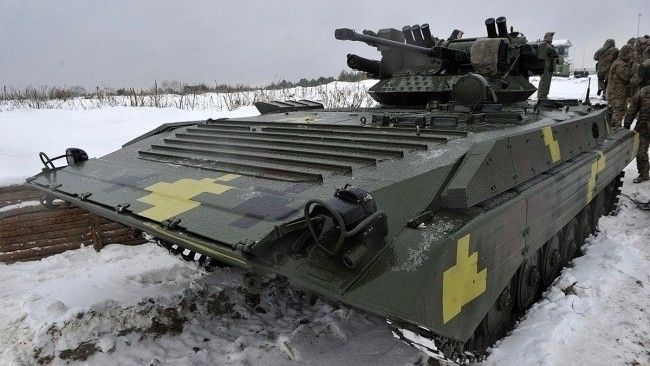
Polish “Łoś” and Ukrainian “Fantom”. Unmanned Systems Showcased In the Vicinity of Kiev
A demonstration of land and aerial unmanned systems took place at a Ukrainian training range close to Kiev. The display involved Polish Łoś and Warmate UAVs, as well as Ukrainian Fantom land based platform armed with a heavy machine gun, or a BMP-1 vehicle fitted with the Shkval unmanned turret. Secretary of the Ukrainian National Security and Defence Council, Olexandr Turchynov participated in the said event. Turchynov stated that the showcased systems are expected to be tested in combat in the spring of 2017.
The demonstration of the “unmanned combat systems” took place at a military training range in the vicinity of Kiev, on 9th December this year. The “unmanned systems” here are understood very widely, since the term included both the UAVs, as well as remote controlled armament module, or even the “Shkval” turret system, installed onboard the BMP-1UMD IFV.
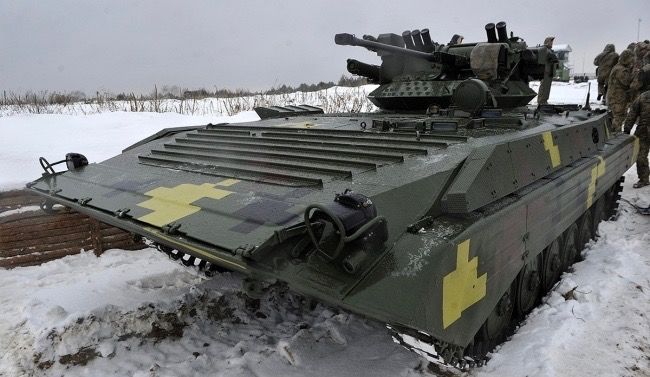
The turret constitutes an element of a wider, Ukrainian modernization of the BMP-1 vehicles. Shkval features a full armament package including a 30 mm ZTM-1 automatic cannon, coupled KT-7.62 machine gun and KBA-117 automatic grenade launcher (a derivative of the AG-17 launcher), installed on the left side of the turret. Moreover, the Ukrainians have also fitted the turret with a double launcher of the Konkurs (or Barier) ATGMs, operated in a semi-automatic mode. The armament utilized is capable of effectively neutralizing land targets at distances of 5500 meters in case of the missiles, and more than 2000 meters in case of the cannon (the cannon may be utilized in order to attack airborne targets too).
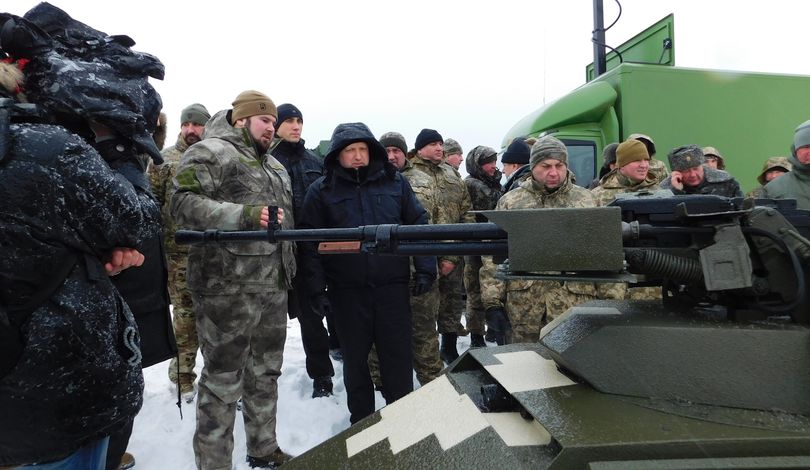
Besides the Shkval turret live fire test, presentation of the Polish WB Electronics “Łoś” and “Warmate” UAV systems was probably the most interesting part of the event. The same may be said, when it comes to the display of the armoured reconnaissance-combat Fantom platform, manufactured by Ukroboronprom. In both cases, the systems were presented in action and in a static setting, in front of the Secretary of the Ukrainian National Security and Defence Council, Olexandr Turchynov. During the display, the weather conditions were very rough, fusing the low temperatures with intensive snowfall. It was a serious test for all of the presented systems.
Polish WB Electronics UAV systems are an object of interest for the Ukrainian Armed Forces and Industry. According to the sources in Kiev, FlyEye UAVs have already been acquired by the Ukrainian Armed Forces, and they are being used operationally. Meanwhile, talks began concerning potential initiation of license-based manufacturing of both the FlyEye drones, as well as of the Warmate loitering munitions. In the latter case though, it is expected that the WB drones would make use of locally manufactured warhead solutions. In both cases the negotiation procedure involves the CheZaRa company from the city of Chernihiv. The said entity has planned to initiate production of the FlyEye systems this year.
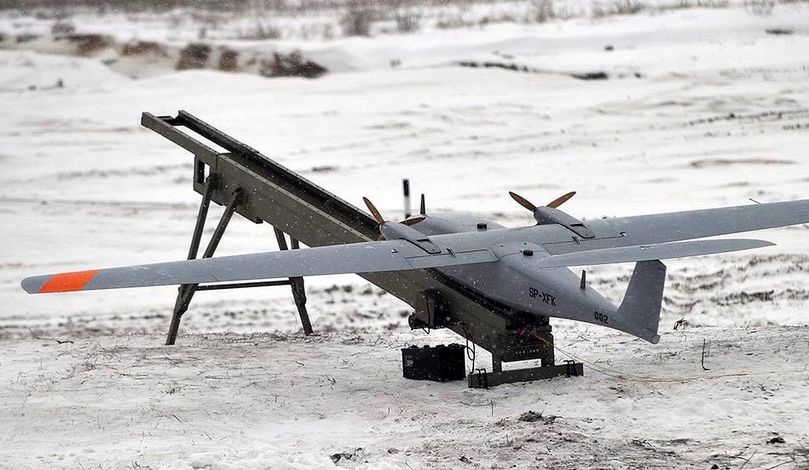
Within the Ukrainian field test range, operational capabilities of the “Warmate” UAV were also showcased. The said system has a wingspan of 1.4 meters and it is 1.1 meters long. At distances of up to 10 kilometres, the system has a flight endurance of up to 30 minutes. The UAV in question may be used for the purpose of carrying out reconnaissance, or in order to attack targets with the use of anti-tank, fragmentation or fuel-air explosive warheads. However, this was not the first demonstration for this system, which has already been presented both in the field, as well as during the Kiev Arms and Security 2016 exhibition.
However, a dynamic display involving the latest design by WB Electronics, has been a novelty. Here we are referring to the “Łoś” tactical UAV which was premiered during this year’s edition of the MSPO event in Kielce. Łoś UAV weighs 85 kilograms, its wingspan is 6.4 meters and the fuselage is 3.1 meters long. The drone takes off autonomously, from a mobile ramp fitted with a catapult. The said catapult trailer may be towed by the vehicle within which the operator station is placed. The control system’s range exceeds 180 kilometres. The UAV in question has been fitted with two internal combustion engines, which is an atypical solution, however, the ability to fly, should one engine fail, increases the level of safety and reliability. Not only is “Łoś” capable of carrying out reconnaissance tasks or acting as a forward artillery fire control platform. as the Polish UAV also has an ability of carrying armament payload of up to 55 kilograms. Its flight endurance is defined as 18 hours. The bomb-carrying capability has not been demonstrated in Ukraine, nonetheless, during the display organized for Antoni Macierewicz, head of the Polish Ministry of Defence, “Łoś” was flying with two mock-up Larus guided bomb units slung under its wings. The said armament has been designed by the Polish Military Institute of Armament Technology.
Alongside the Polish drones, demonstration of the unmanned “Fantom” vehicle, fitted with an optronic sensor mounted on a special mast, and armed with stabilized .50-cal. machine gun, also was very interesting for the gathered audience. Moreover, an option exist to fit the vehicle with guided missiles. Fantom vehicle has light armour, it is based on a six-wheeled chassis fitted with an independent suspension. The platform also uses a hybrid propulsion system. Thanks to its design, the vehicle is able to cover a distance of 20 kilometres, at speed of up to 38 kilometres per hour. The control system may be based on an armoured vehicle, such as Dozor-B, providing the user with an ability to control the unmanned system with encoded radio signal or with an optical fibre with a length of up to 5 kilometres.
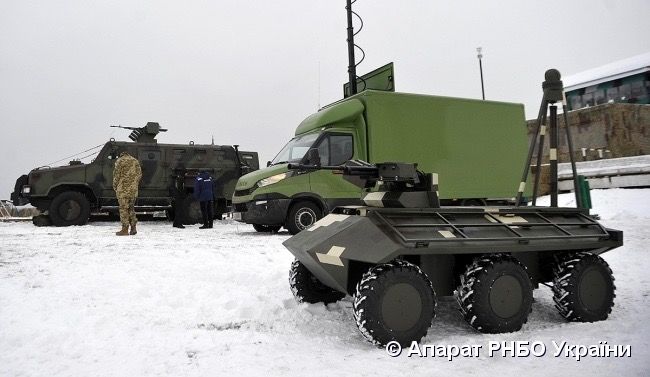
The whole presentation was organized as a show of “Ukrainian unmanned systems”, which clearly suggests that Ukraine is interested in license-manufacturing of the WB Electronics UAVs. Olexandr Turchynov stated that the presented systems are to be “combat tested”, as early as during the spring of 2017. However, the Ukrainian official did not specify, to which systems his declaration should apply. It is highly probable though, that the WB Electronics drones would be included in the aforesaid group, since they have already been positively assessed by the Ukrainians, and they have also been used by the operational units.
